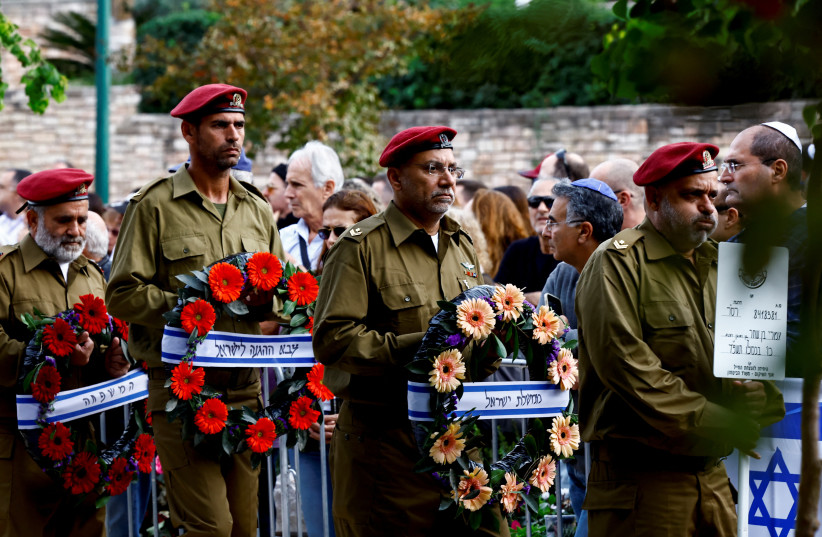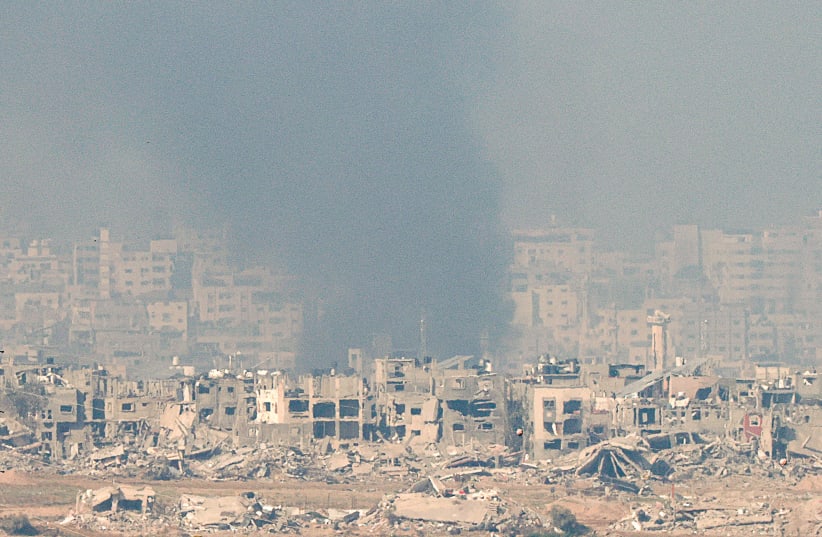The intense battle that resulted in the deaths of nine soldiers in the Shejaya neighborhood in Gaza City on December 12 shows that Israel has yet to fully grasp the gravity of the situation it faces.
The events of October 7 demand a substantial shift in the rules of engagement, not only from a strategic perspective (favoring decisive action over deterrence), but also on a tactical level.
Israel remains committed to conducting “humane” warfare, seeking pride in being deemed “the most moral military in the world,” even if it comes at the cost of lethality and operational success.
Consequently, the Israel Defense Force (IDF) continues to expose soldiers to unnecessary risks, seemingly influenced by a government that complies with American demands to minimize harm to non-combatants in Gaza, aiming to maintain international support for the ongoing conflict.
The incident in Shejaya unfolded in a densely populated area within an undamaged residential compound. The restrictive combat conditions in the Shejaya neighborhood limit the use of tanks and armored vehicles, thereby exposing IDF forces to enemy fire.
In this context, IDF forces entered the compound with the objective of clearing it, a method employed in various operations throughout Gaza. This approach contrasts with the alternative of aerial bombardment to neutralize structures first, followed by ground forces entering to clear debris and search for tunnel shafts below.


The incident, known as “Black Tuesday,” is part of a series of similar cases that occurred during the Gaza war.
The tragedy that came with being moral
For instance, it happened just two days after the tragic incident in which five fighters fell victim to an IED near a school in Khan Yunis. On December 12, the IDF spokesperson released a video, captured by a helmet camera, that features a member of a special combat engineering unit engaged in face-to-face combat inside an apartment in the Shejaya neighborhood.
Despite acknowledging the bravery and heroism displayed by the fighter, questions arise about the necessity of sending IDF soldiers to clear compounds in standing buildings that could potentially be utilized for terrorist activities.
While the IDF has been cautious in targeting only structures and infrastructure directly linked to terrorist activity, there’s a growing realization in Israel, especially post-October 7, that the entire Gaza Strip poses a significant threat, constituting a unified terrorist base. This is particularly applicable to the Shejaya neighborhood, identified as Hamas’s stronghold in Gaza City. Combat in this area occurs within densely populated regions, where Hamas has established a complex network of traps, explosive charges, ambushes, booby-trapped buildings, sniping positions, anti-tank launches, and more.
To minimize the risk to soldiers, the IDF could adopt a strategy of preemptively destroying every house and building in an area before sending in ground forces. The current tactics not only endanger fighters’ lives but also heighten the chances of abductions, providing Hamas with additional leverage. This approach raises the risk of friendly fire and self-inflicted harm among IDF soldiers.
However, the situation differs when the soldiers are responding to IDF endeavors to militarily rescue kidnapped Israelis. Unlike other situations, these are critical operations necessitating and justifying warfare by ground forces, despite the inherent risks. This is because it’s not feasible to carry out airstrikes or ground bombardments on a specific house identified by intelligence as potentially containing abductees.
Israel needs to communicate unequivocally with the American government, asserting its view that the entire Gaza Strip is deemed a terrorist territory. Despite this characterization, Israel has taken significant measures to minimize and prevent harm to civilians.
These measures include deferring ground maneuvers, facilitating the southward movement of Gazan residents, and establishing a refugee camp in the southwest of the Strip. These actions set a precedent, as they have not been undertaken by any other nation, not even by Western democratic countries that often criticize and rebuke Israel for alleged harm to supposed “innocents.”
The IDF’s focus should shift from aspiring to be “the most moral military in the world” to becoming the most effective military force, especially in the face of a ruthless, Nazi-like adversary like Hamas-ISIS.
This shift implies a practical change involving the widespread destruction of Gaza from the air with tanks and artillery, transforming the Strip into ruined cities akin to the bombing of Dresden. Only then should IDF forces enter the area to clear what remains.
The writer is a research fellow at the Jerusalem Institute for Strategy and Security.
